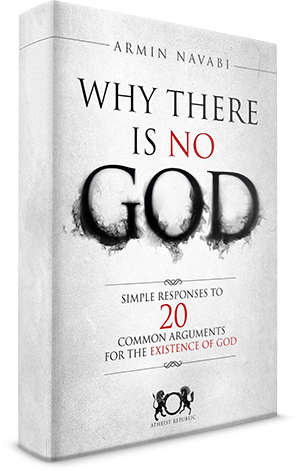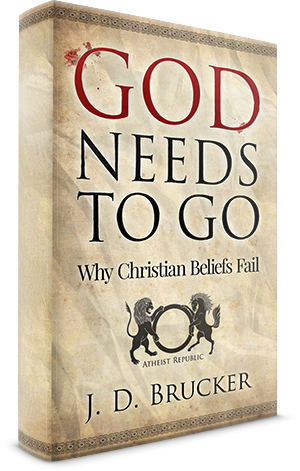
Krampus: The Satan of Christmas
Krampus is a very old mythological figure that predates Christianity by several thousand years. Originally thought to be a pagan construct of Germanic origins, Krampus is a long standing archetype for the idea of a devil or demon. Often Krampus is said to be seen in the form of a classical idea of a devil with cloven goat-like hooves and horns. As is the case with many supposedly Christian customs, when Christianity was pressed upon pagans as it spread throughout Europe, these pagans held on to their earlier mythology as much as they could and tried to integrate it into the spreading and dominant Christianity at the time. Thus, Krampus came along with them into the Christmas celebration in the early years of Christian expansion.
He became sort of the alter ego of Saint Nicholas or Santa doing the dirty work of punishing the naughty kids who didn't make Santa's nice list. It was said that "Krampus punishes the naughty children, swatting them with switches and rusty chains before dragging them in baskets to a fiery place below." [1] Of course as society progressed even Christians found this notion troubling and potentially disturbing or morbid to thrust upon children and slowly Krampus was left behind in Christmas mythology. Santa was left to do his own dirty work and started handing out coal to the naughty children rather than having a devil beat them severely and drag them off to hell.
Kids today just don't know how good they've got it!
Comparative Mythology
If we can accept the idea that religion, Christianity included, is nothing more than trumped up mythology, as I would imagine most of us atheists already do, then we can do a bit of comparative mythology work. We can look at this long standing myth of Krampus and set it side by side with the classical Christian idea of Satan and we can compare the two. In doing so we can see some very striking similarities. Two of the most notable similarities are the idea of the physical appearance of these two figures and the intrinsic connection between these figures and a notion of hell and torment. Krampus is said to have cloven hooves and horns in almost a goat-man appearance and the same can be said of much of the most notable Christian ideas about the appearance of Satan. In both cases we see these figures portrayed almost as gatekeepers of a place of great suffering and torment. If we then say that indeed the connection is clear, then we are left to question whether they are myths which evolved separately on a convergent path, or whether one actually evolved into the other.
Now seeing that the Krampus myth came before these contemporary ideas about what Satan looks like, I think it's fair to assume that at least to some degree the Krampus myth very likely influenced people's ideas about what demons and even the figure of Satan may look like. This is not however meant to imply that the myth of Satan was directly reworked from the Krampus myth. You see, what I'm discussing here is not the myths themselves but rather the image of what these beings supposedly look like and the similarities between the two. While parts of these myths have striking similarities, such as both Satan and Krampus living in some fiery underworld, there are also many dissimilar ideas at play within these myths as well. In truth, if I personally were to compare the mythology of Satan with any other mythology it would be that of Prometheus from Greek mythology. Indeed the similarities between those two myths as far as the actions and roles that are played by those two figures are so eerily similar that one might assume that the two were nearly a mirror image of each other (I'll address the similarities between Prometheus and Lucifer in a future blog). However, when it comes to the image most people have in their minds of what Satan looks like, Krampus is fairly spot on.
What's Your Point?
So here's the rub.
You see, the bible says little to nothing about Satan, most especially about his appearance. The reality is that the idea many Christians have about Satan's appearance is just taken from other myths. And this is true for the ideas people have about god and Jesus' appearance as well. Yet no matter where those ideas came from they are ingrained and entrenched in the dogma of Christianity. In point of fact a great deal of Christian dogma is based on past mythology and has little to no biblical basis at all. Yet these ideas, this dogma, greatly influences Christians on a daily basis.
You see, when you give an idea a face it gives it substance. A corporeal spirit carries far less weight than a horned and hooved demon and those who propagate these myths well know this. That image of the cloven hooved deceiver is meant to strike fear in the mind, and it works rather well on many believers. But once you look closely at the myths and see these connections it becomes much easier to dismiss them as the nonsense they are.
This is why studying religion and mythology side by side is one of the greatest tools that atheists have. Because it allows us to paint a clear picture and say that if one dismisses Krampus as nonsense, then there is no reason to give the idea of Satan any credence either. If we can dismiss Prometheus as fiction then we can also dismiss Lucifer as fiction. And if we can dismiss all the other gods of mythology as imagined beings from the minds of our ancestors, then we can as well dismiss the notion of the Christian god as well. After all, if you really take the time to dissect the issue the Christian god is really just another in a long line of gods who has morphed from one idea to another, but lacks any real substance.
I would encourage every atheist out there who debates and discusses religion to dive headlong into ancient mythology because you might be surprised at just how unoriginal all these ideas truly are.

































